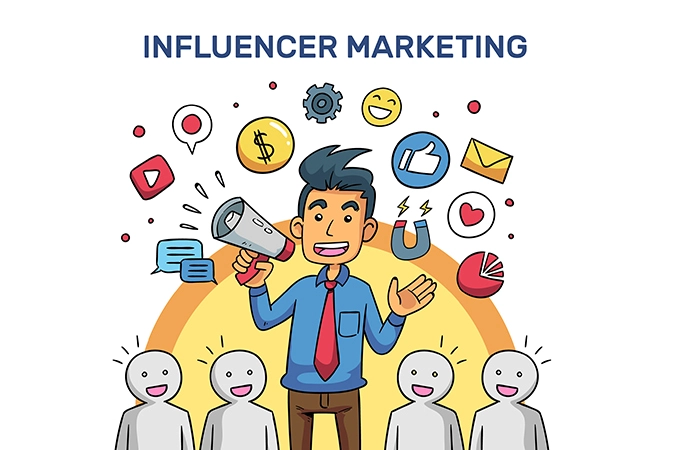In the rapidly evolving landscape of digital advertising, staying ahead of trends and leveraging innovative strategies is crucial for brands aiming to maximize their impact and reach. As we approach 2024, several emerging trends and proven tactics are shaping the future of digital advertising. This article explores these trends and provides insights into effective strategies that brands can adopt to achieve maximum impact in their advertising campaigns.
Digital advertising has transformed the way brands connect with consumers, offering unprecedented targeting capabilities, real-time engagement metrics, and creative opportunities. As we look ahead to 2024, understanding the latest trends and deploying strategic approaches will be essential for marketers seeking to optimize their advertising efforts and drive meaningful results.
Emerging Trends in Digital Advertising
1. Personalization at Scale
Personalization continues to be a cornerstone of effective digital advertising. In 2024, advancements in artificial intelligence (AI) and machine learning will enable brands to deliver hyper-personalized content and experiences tailored to individual preferences, behaviors, and demographics. From dynamic ad creative to personalized recommendations, brands can deepen customer engagement and improve conversion rates by delivering relevant messaging in real-time.
2. Video Dominance
Video content remains a dominant force in digital advertising. With the proliferation of high-speed internet and mobile devices, video ads capture attention and convey brand messages effectively. In 2024, short-form video, live streaming, and interactive video formats will continue to gain traction. Brands that invest in compelling storytelling and immersive video experiences will stand out in a crowded digital landscape.
3. AI-Powered Automation
Automation powered by AI will streamline advertising operations and enhance campaign efficiency. In 2024, AI algorithms will optimize ad placements, bidding strategies, and audience targeting in real-time, maximizing ad performance and ROI. Automated tools for creative production, such as AI-generated content and personalized messaging, will enable brands to deliver timely and relevant ads at scale.
4. Privacy-First Advertising
Consumer privacy concerns and regulatory changes have reshaped digital advertising practices. In 2024, brands will prioritize transparency and consent-driven approaches to data collection and usage. Contextual advertising, which targets ads based on the content of web pages rather than user data, will gain popularity as a privacy-compliant alternative to behavioral targeting. Brands that prioritize trust and respect user privacy will build stronger customer relationships and enhance brand reputation.
Strategies for Maximum Impact
1. Integrated Omnichannel Campaigns
Effective digital advertising in 2024 will require a cohesive omnichannel approach. Brands should integrate their advertising efforts across multiple channels, including social media, search engines, display networks, and emerging platforms like connected TV and voice assistants. Consistent messaging and seamless user experiences across channels will reinforce brand visibility and drive engagement throughout the customer journey.
2. Influencer Collaboration
Influencer marketing continues to evolve as a powerful strategy for reaching targeted audiences and driving authentic engagement. In 2024, brands will collaborate with micro and nano influencers who have niche audiences and high engagement rates. Authentic partnerships and sponsored content that align with influencer values will resonate with followers and enhance brand credibility.
3. Interactive and Immersive Experiences
Interactive advertising formats, such as augmented reality (AR) filters, gamified ads, and shoppable experiences, will capture consumer attention and drive interaction in 2024. Brands can create memorable experiences that engage users directly and encourage participation. Interactive ads not only increase engagement metrics but also provide valuable insights into consumer preferences and purchase intent.
4. Data-Driven Insights and Optimization
Data analytics will continue to play a pivotal role in shaping digital advertising strategies in 2024. Brands should leverage advanced analytics tools to gather actionable insights into audience behavior, ad performance, and campaign attribution. Real-time data monitoring and optimization will enable agile decision-making, allowing brands to allocate budget effectively and optimize ad spend based on performance metrics.
Case Studies and Success Stories
1. Spotify’s Personalized Playlists
Spotify uses AI algorithms to curate personalized playlists for millions of users based on listening habits and preferences. This data-driven approach not only enhances user experience but also enables targeted advertising opportunities for brands looking to reach specific demographics through audio ads.
2. Nike’s Video Campaigns
Nike’s video campaigns, such as “Dream Crazy” featuring Colin Kaepernick, have sparked widespread conversation and engagement. By leveraging compelling storytelling and cultural relevance, Nike continues to resonate with global audiences and reinforce its brand values through impactful video content.
3. Amazon’s AI-Powered Recommendations
Amazon uses machine learning algorithms to predict consumer preferences and behavior, delivering personalized product recommendations and targeted ads across its e-commerce platform. This data-driven strategy enhances user experience and drives conversion rates by presenting relevant products at the right time.
As digital advertising evolves in 2024, brands must embrace innovation, leverage technology, and prioritize consumer trust to achieve maximum impact. By staying informed about emerging trends, adopting personalized strategies, and optimizing campaign performance through data-driven insights, brands can navigate the competitive landscape and effectively connect with audiences in meaningful ways. The future of digital advertising lies in creativity, authenticity, and a strategic approach that aligns with evolving consumer behaviors and preferences.


